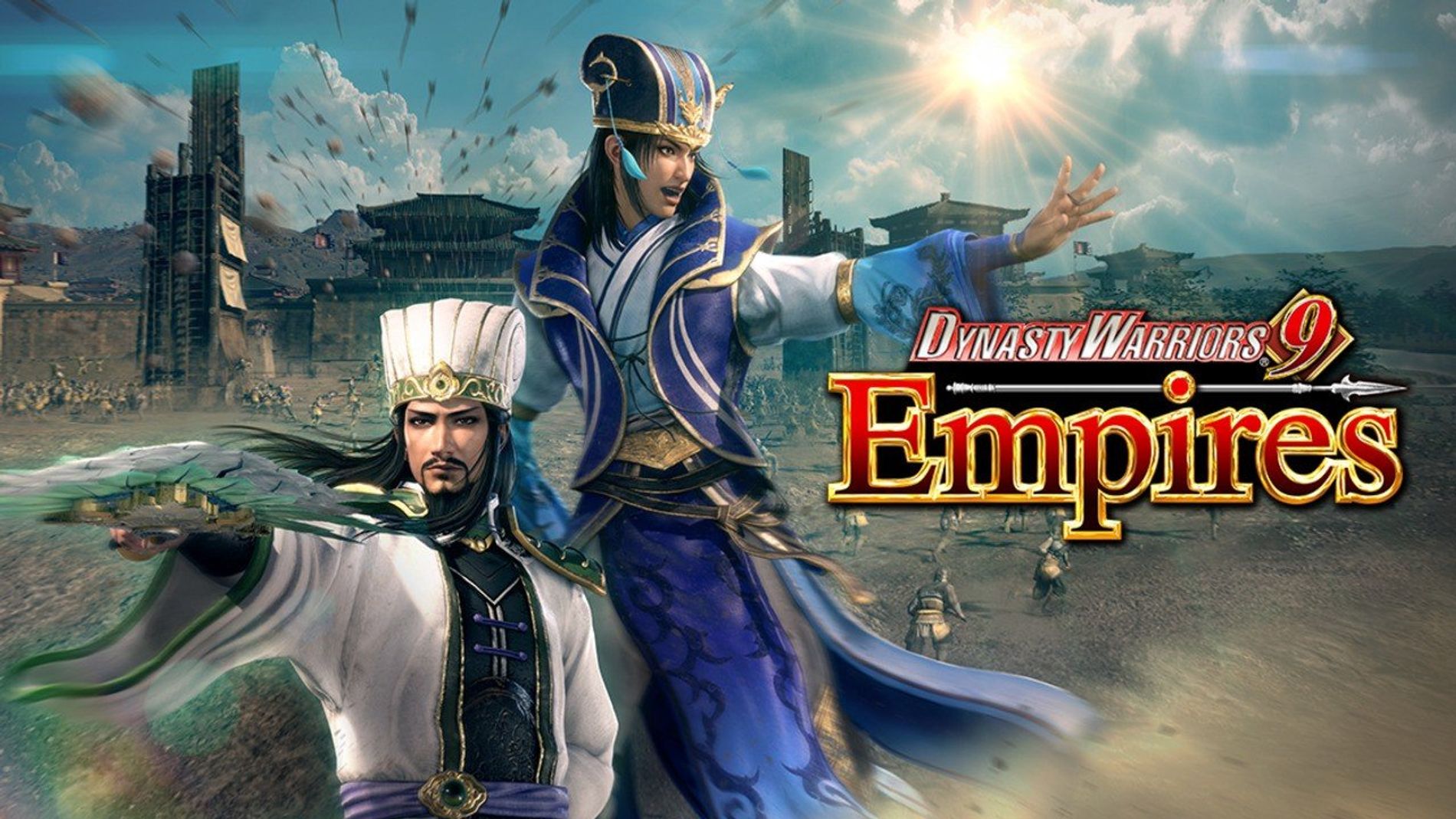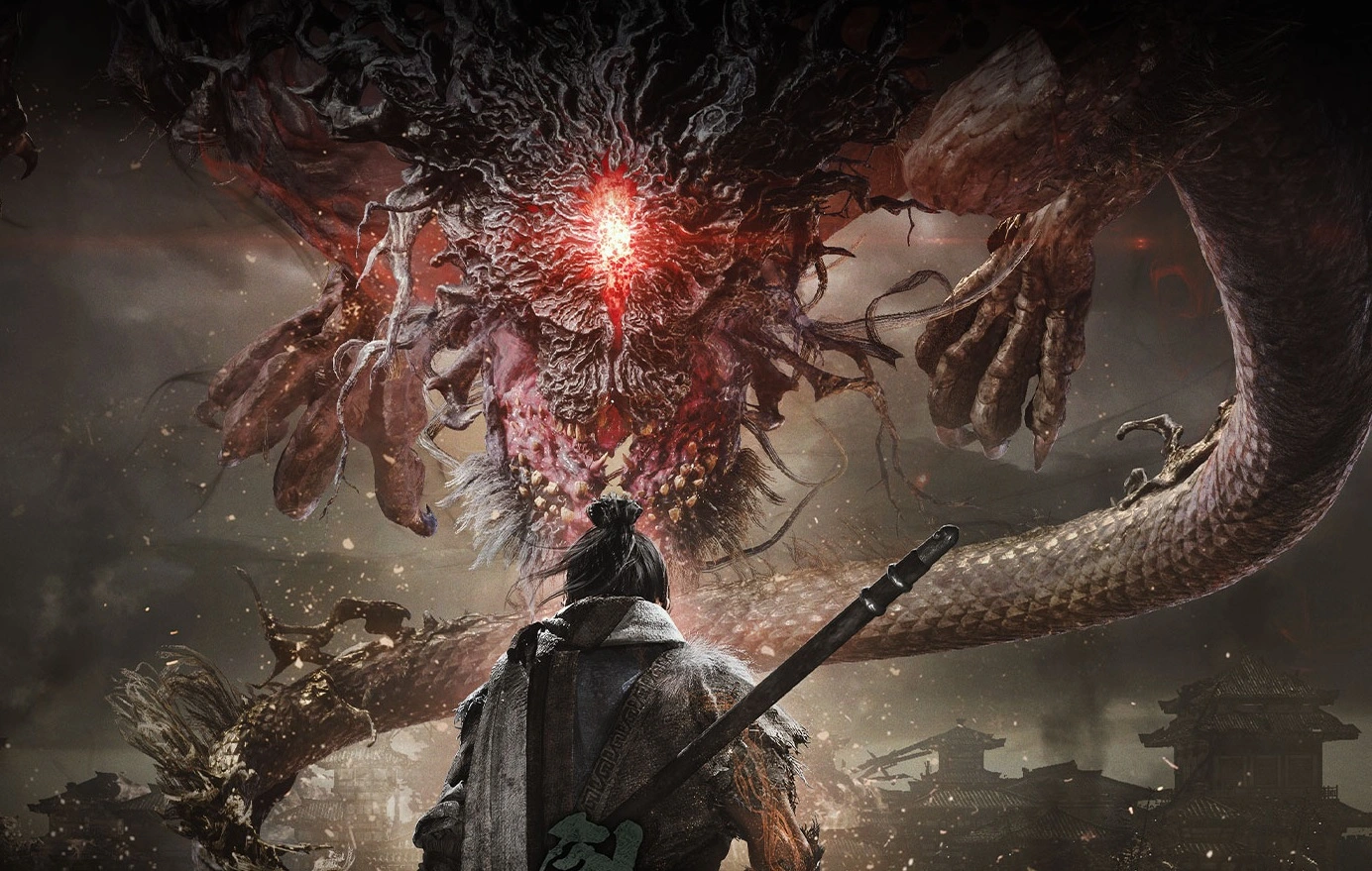Nobunaga’s Ambition: Awakening Review (PS5) – Samurai Warriors, March!
It was just last year that I discovered the real-time strategy series Romance of The Three Kingdoms. Having sunk over 20 hours in that title conquering the forces of Cao Cao and co with my tiger generals, it just felt natural to pick up Japanese little brother equivalent.
Much like how Samurai Warriors runs parallel to the Dynasty Warriors series, Nobunaga’s Ambition: Awakening feels much akin to its Chinese series’ sibling. Only this time, you’ll be warring with muskets, conducting battlefield sieges and claiming dominion over the Sengoku period.
An RTS still seems like a strange bedfellow considering the Musou entries Koei Tecmo are known for producing. Nonetheless, here we are. Is it worth throwing down the spears and the Musou moves for a birds-eye-view camera and tactical role as a commander?
Forge Your Clan
Nobunaga’s Ambition: Awakening is a more streamlined and accessible RTS game than most. Featuring ten scenarios all set during the Warring States Period of Japan, it follows the rise and (spoilers) ultimate fall of Nobunaga Oda. Each scenario begins with the various factions having allocated territories, officers and resources, based roughly on their position at the relevant time in history.
Your role as Daimyo and lord commander of your clan, is to manage your villages to collect coin and supplies in order to make war and wrestle control of the entirety of the nation. In order to do so, you can forge alliances through diplomacy, lay siege to enemy castles for territorial control and manage your own lands to improve their efficiency. Oh, and you’ll be managing your officers’ own loyalty too.
As an RTS, it’s an easy setup loop. You focus on gathering resources, purchasing land improvements and then raising armies to expand your influence. Rinse, repeat until you’re the greatest in the land. The scenarios themselves, while historically interesting, all play out exactly the same in terms of gameplay, which does slightly undermine the sense of enjoyment or motivation to do them all.
Much like the Warriors series Nobunaga’s Ambition: Awakening is related to, it’s a relatively surface level approach to a complicated genre. If you’re new to RTS’, it would certainly make a great starting point, but for veterans of the genre, you may mind it quite lacking after completion of just a single scenario.

Oda-ssey Of Expansion
To its credit, Nobunaga’s Ambition: Awakening’s control scheme works very well on console. You largely interact with the world map, selecting individual castles or units. Most orders are dolled out via five main menus: diplomacy, military, civil, appoint and council. In each, you’ll be navigating menus to deploy armies, appointment officers to positions and ensuring land is adequately utilised.
You’ll be spending a lot of time micro-managing things, especially at first. For example, bases can be allocated facilities and you’ll need to raise farms and markets for resources. You very rarely start with overwhelming power, meaning you’ll be making deals with other clans to ward off stronger rivals. Anything important is handled and tracked by an activity bar on the side.
Over time, I did grow a little tired of the amount of micro-management required. The stop-start nature of activities and how any notification will pause time progression became quite frustrating. However, when you start to enact higher-tier policies, you can auto-assign many jobs, allowing you to get on with the more exciting parts of the game.
Despite the initial impression of so many complex systems, you only really need to worry about diplomacy and civil management to succeed. Military efficiency actually becomes less important the more powerful you grow, as eventually you’ll loom larger than any other individual clan, making steamrolling opponents rather straightforward.
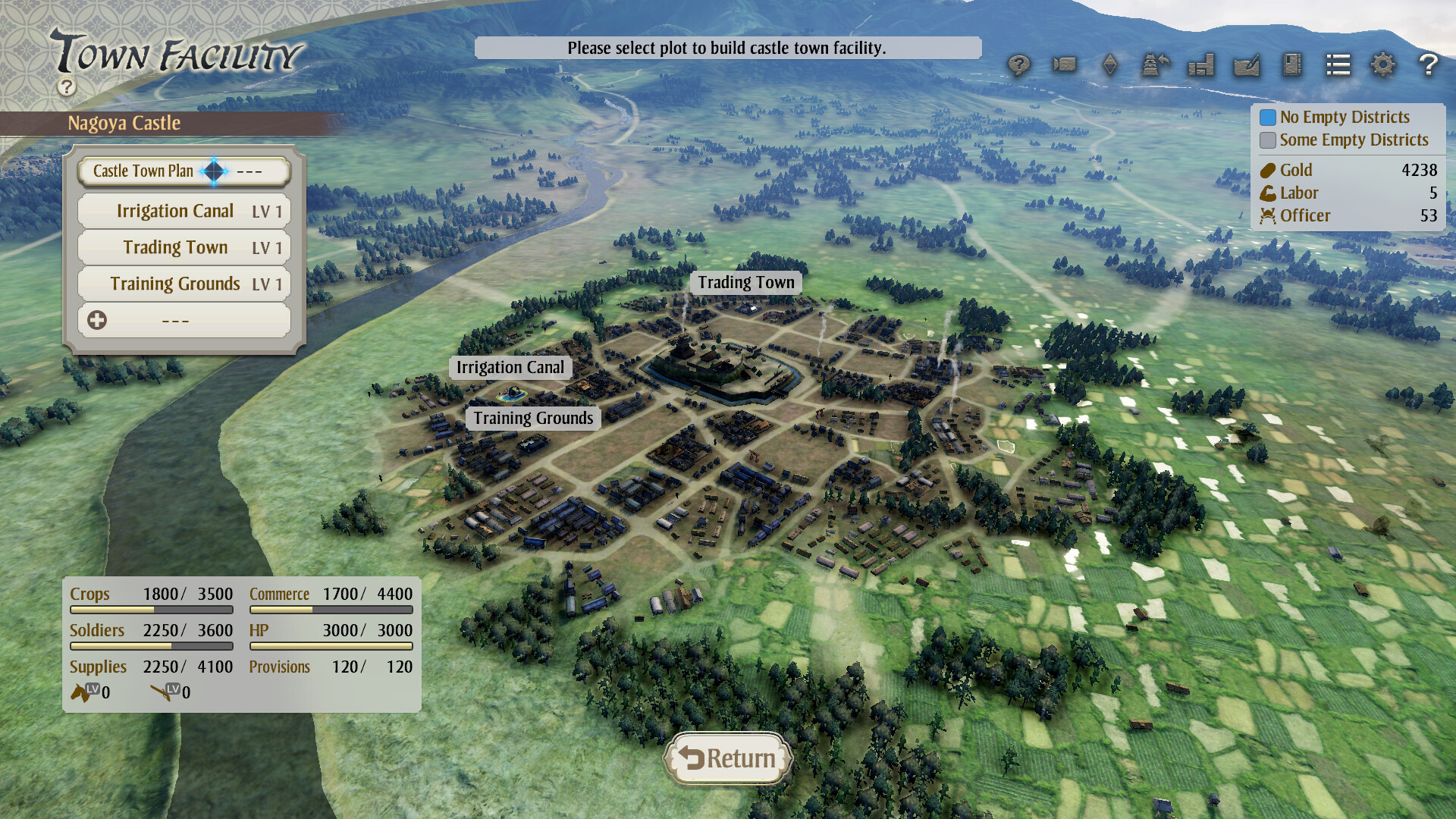
Put Them To The Sword, And The Musket
Once you’ve filled your castles’ coffers and stores with supplies, it’s time to make bloody war. Nobunaga’s Awakening: Ambition builds on the Romance series’ combat with a solid musket round, coupled with some inaccurate misses. Unlike the more precise control in its older brother’s series, Nobunaga’s game does most of the thinking for you.
In order to lay siege to an enemy, you must first allocate castles to target your sieging prey. Troops will amass, at which point you select all armies you want involved and the game will auto-populate units and send them on their way. You can then manually select army units and direct them, but it does feel a bit clunky in places and imprecise.
Sieges and battlefield skirmishes are the biggest addition to this entry and they shine. I cannot tell you the satisfaction that comes with holding off an army of 25,000 with just 2,000 men in a castle siege. Nor can I tell you just how gleeful I was when I called in assistance from three allies, rallied 30,000 soldiers and held off the sudden advance of a nefarious foe swarming at my land with 90,000 troops in tow.
When engaging in a siege or a historical battle, you’ll enter onto a smaller battlefield map, where you’ll manually direct your units to capture important zones and wipe out foes. If it’s a castle siege, you can either break the enemy morale, conquer the central citadel or defeat every unit to succeed. The AI can be surprisingly adept when it wants to be and defenders always have a significant advantage, making ill-prepared assaults a dangerous, wasteful endeavour.
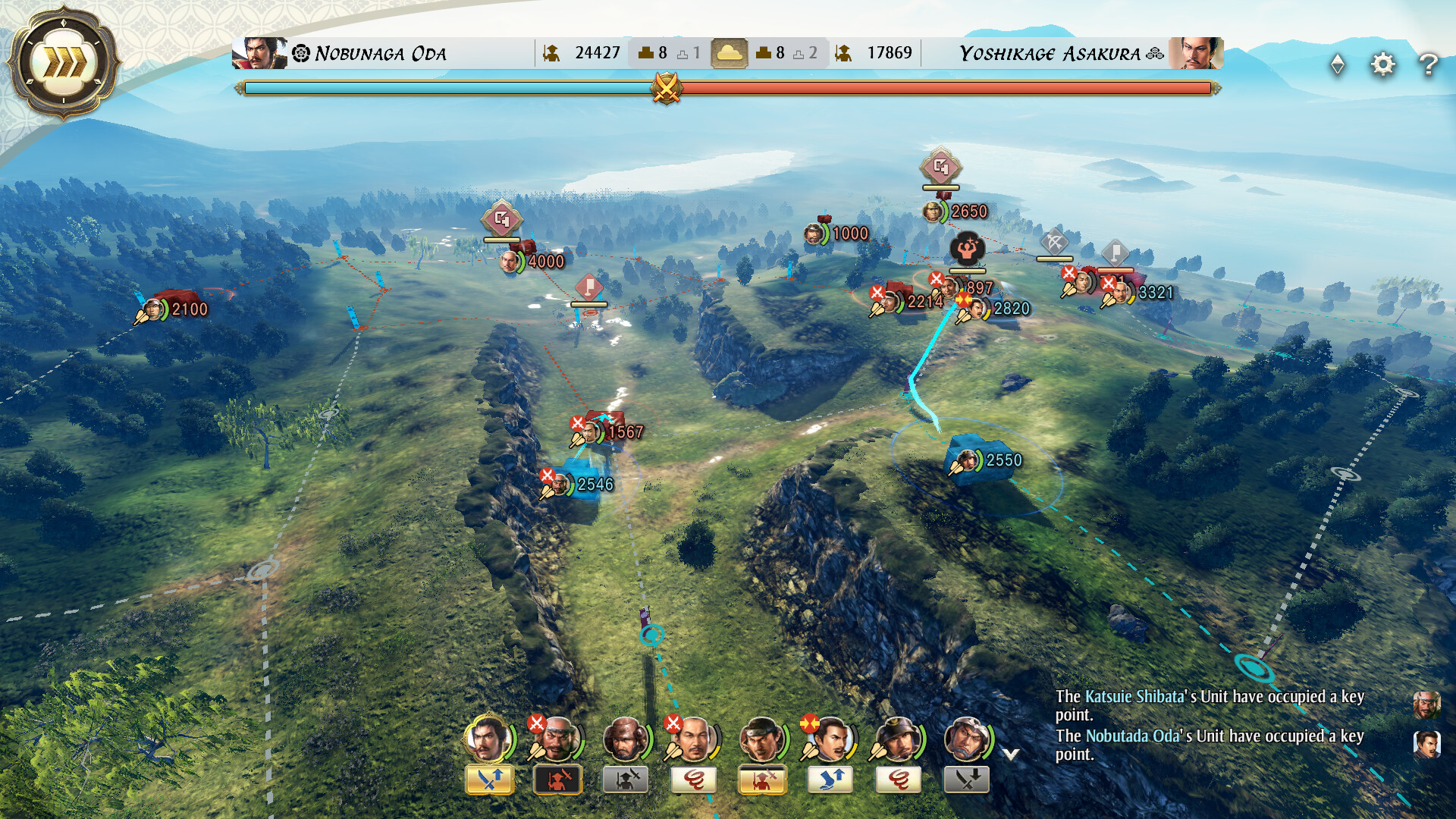
I’m Not Shura-bout This
While none of the RTS gameplay is revolutionary, Nobunaga’s Ambition: Awakening does enough with unit specialties, traits and stats to make it engaging. You do have to think, which is where the game is at its best. There’s still the odd hiccup, like a unit retreating randomly despite having the upper hand, but pulling off a successful pincer movement or drawing out troops with a decoy feels genuinely awesome.
Now, the game does suggest that diplomacy is also an option, but I’m not convinced. In order to emerge victorious on any scenario, you basically have to conquer X number of towns or territories. Try as I might, I could never manage to get an opposing clan to submit or become a vassal. This effectively forced me into open war with them, even if it breaks the established historical logic.
For example, when starting out as Nobunaga, I was forced to destroy Ieyasu and his clan because I couldn’t take control of their castles through diplomatic means. I effectively became a horrid, power-hungry dictator. Which, come to think of it, maybe the game has succeeded in turning me into Nobunaga… genius.
Potential allies would also, seemingly out of nowhere, launch massive assaults on my territories despite us being in open diplomacy and having high trust ratings, creating a weird inconsistency with the system. The only sure-fire solution is marriage, but that can literally be abused to align with the strongest clans (they never refuse) and then decimate the rest of the land.
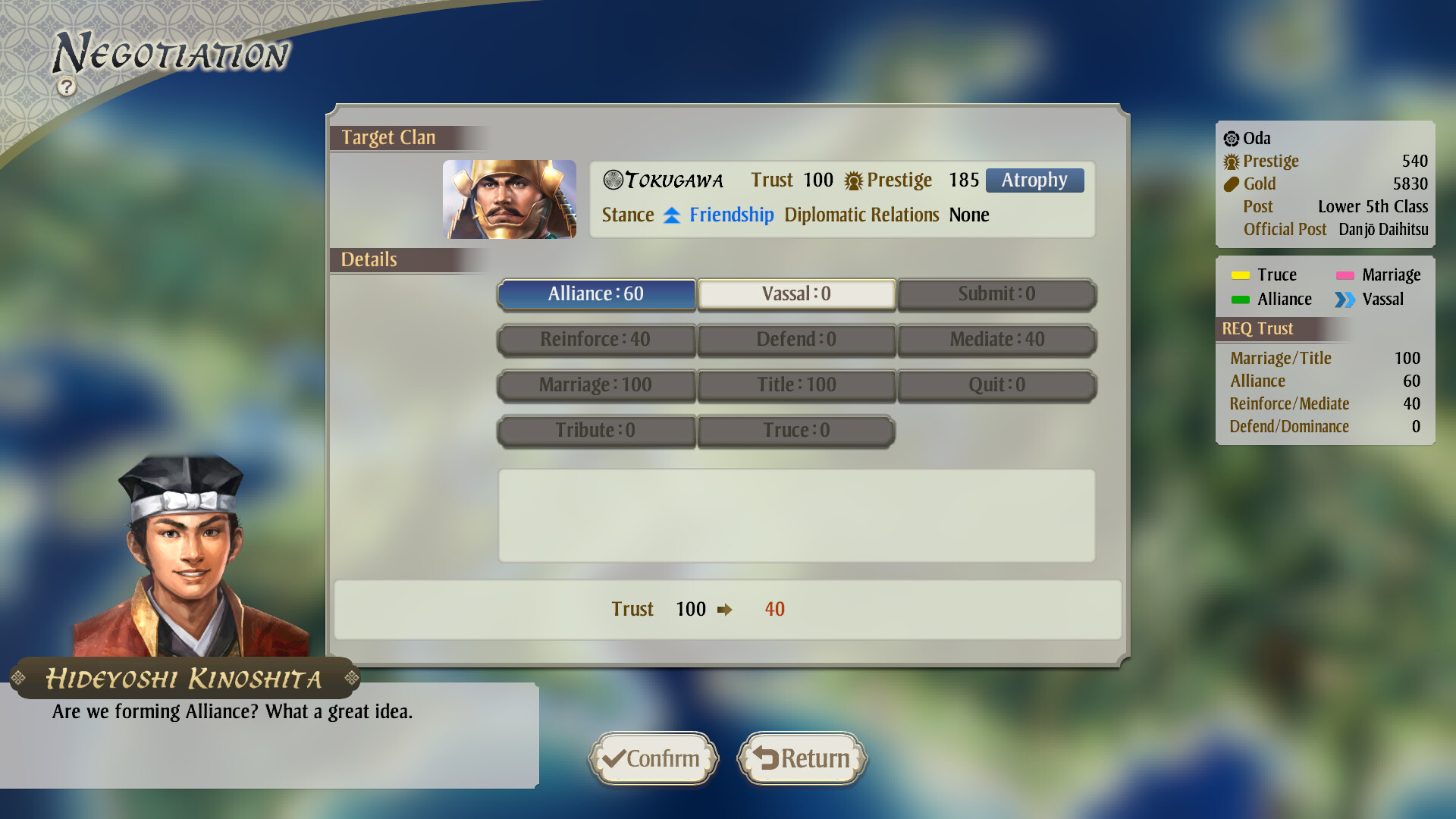
Out Of Season Cherry Blossom
I’ll be honest, neither the Warriors series nor Romance games were lookers. Koei Tecmo have always been about their gameplay niches and providing what their audience want. But damn, their games have never really been pretty. Nobunaga’s Ambition: Awakening is no different, though I will say it holds up better than some others.
There’s a huge number of individual battlefield and siege maps, which is a really nice touch and adds to the authenticity of the spectacle. The overworld map of feudal Japan is well crafted and the cartography is excellently handled, too. When you’re looking over things from distance, there’s a certain immersive quality to the game.
Get up close though, and things get all manner of “yikes” very quickly. Animations for the clashing of units is more basic than a conscripted peasant, while zooming in on the overworld map shows settlements that lack any kind of personality or detail. If you’ve played any title in these series before, you’ll know what to expect, but like I said, Nobunaga’s Ambition: Awakening is on the higher end of the graphical scale. Especially compared to Dynasty Warriors 9.
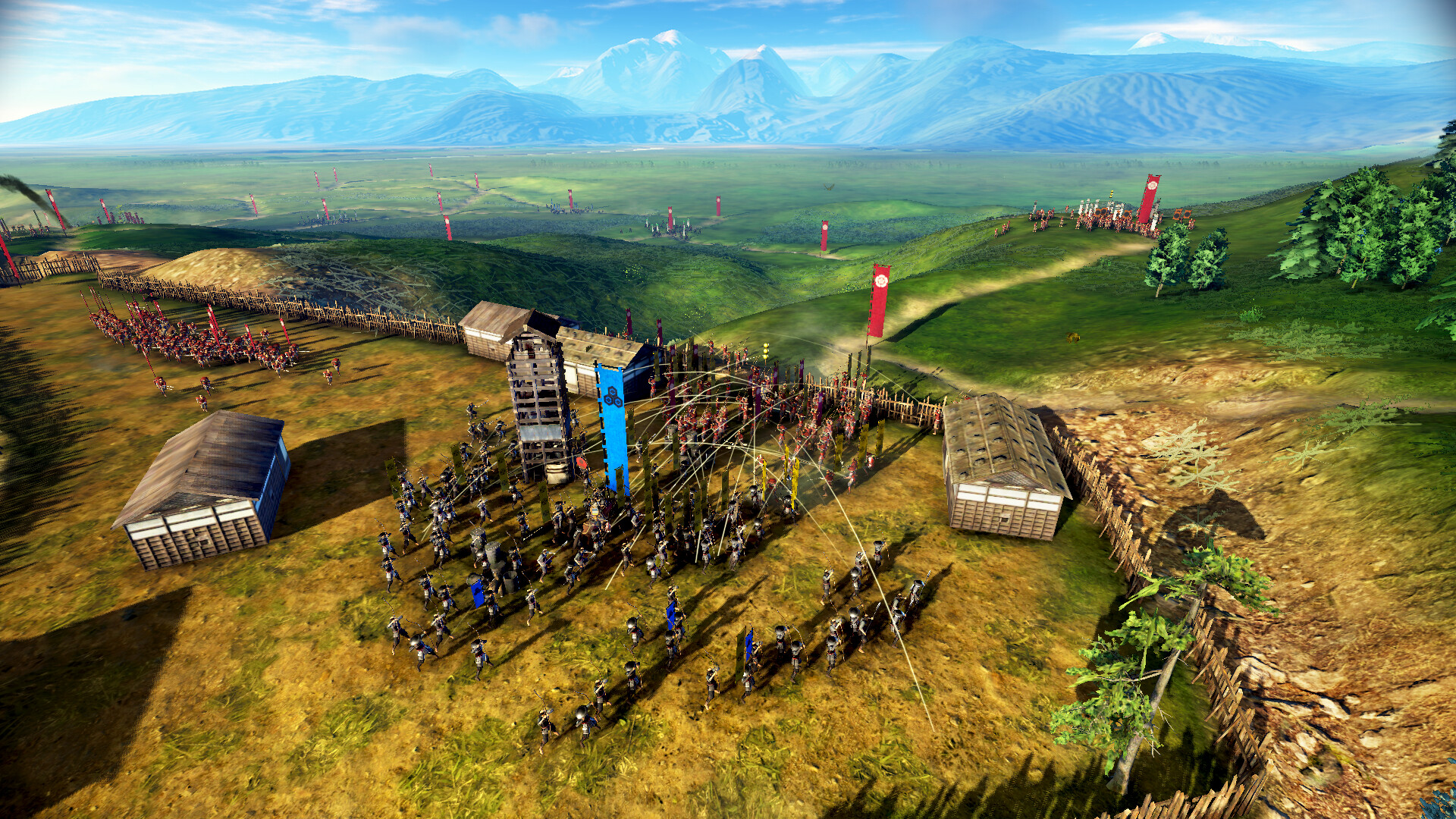
Family Feuds
I haven’t mentioned the story of Nobunaga’s Ambition: Awakening yet and there’s a reason for that: I could barely pay attention to it past the first few dialogue sequences. During any scenario, you’ll get an introduction cutscene, followed by mountains of text interruptions masquerading as “hearsay” events.
If you want the full historical context of what’s going on at any given time, you’ll be spending half of your time in the game mashing X through boring, uninteresting dialogue sections. There’s little to no flair in the delivery and honestly it descends into “[person] has [joined/left] this [clan]” with no real consequences.
Having read up on the Sengoku period in the past and having watched the much more interesting historical dramatisation on Netflix, I felt quite comfortable skipping through or ignoring most of it. There’s the usual events that can trigger if you meet the requirements in-game at the right times, which is still a neat touch, but they’re few and far between, really.
If you were hoping to learn all about the warring Daimyo’s in an interesting or engaging set of scenarios, I’m afraid you’re all out of luck here. I think I’d rather commit Seppuku than have my game interrupted another 600 times in an hour. Look at it more as window dressing for your own role-playing in what was an incredibly dramatic, violent and epic period of history, and you’ll have a much better experience.
Oh, and the Takeda clan are pricks. Watch out for them, backstabbing dishonourable fiends.
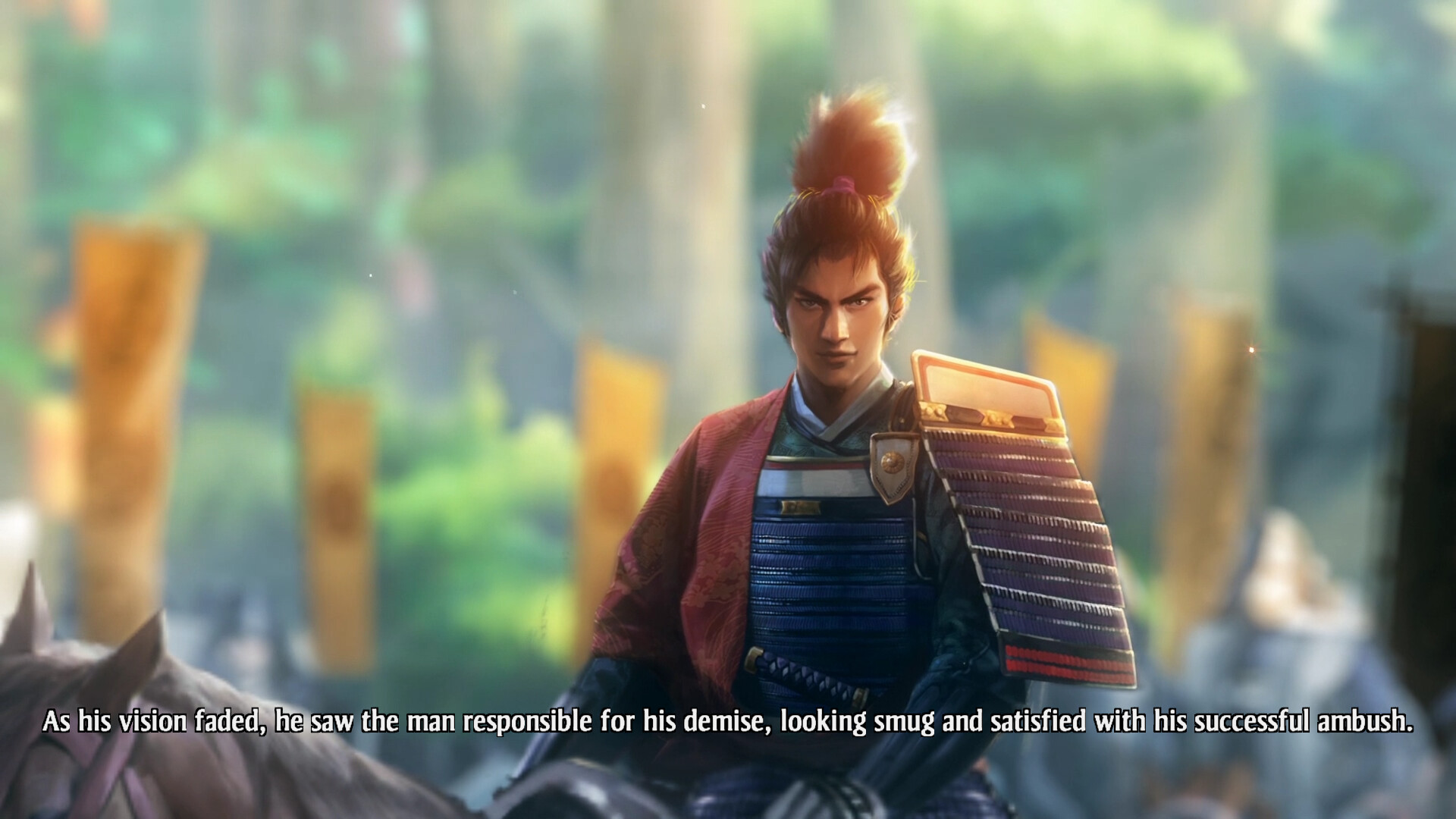
Nobunaga’s Ambition Partially Achieved
A typical scenario campaign in Nobunaga’s Ambition: Awakening can be completed in a widely varying amount of time, but total unification of the land will see you dumping over a couple dozen hours into a campaign, easily. You can usually achieve the scenario’s victory requirement within about 10 hours, but the game allows you to stick around and see it through to the end.
With each scenario only providing different context, there’s little incentive to really do them all, as the gameplay never truly shifts or adapts. Having said that, the basic premise of this war-ravaged samurai has enough supplies to support a fairly lengthy campaign of conquest. Will it be able to stand toe-to-toe with the best RTS’ in the business? Absolutely not, but then the Warriors series has never needed to do that.
I’d recommend it simply on the basis of the weirdly engrossing role-playing nature of it. When I lost a major skirmish and had eight of my most trusted officers defect to the other side, I felt a genuine rage. We’ll ignore the fact that I put them to the sword after I retook said castle and plundered their lands. Moral of the story is: Nobunaga’s Ambition: Awakening is a surprisingly effective Nobunaga simulator, and you’ll be a fearsome, ruthless Daimyo by the end.
Offering a more simplistic approach to traditional RTS systems, Nobunaga’s Ambition: Awakening is an accessible entry that impresses with its sieges and immersive qualities. Its approach to story and presentation are poor, but the Warriors games have never been renowned for these qualities. Instead, you’ll be making your own story as you betray alliances, pull off subterfuge and conquer those who stand against you.

Nobunaga’s Ambition: Awakening is available now on PlayStation 4/5, Nintendo Switch and PC.
Developer: Koei
Publisher: Koei Tecmo
Disclaimer: In order to complete this review, we were provided with a promotional copy of the game. For our full review policy, please go here.
If you enjoyed this article or any more of our content, please consider our Patreon.
Make sure to follow Finger Guns on our social channels. Twitter, Facebook, Twitch, Spotify or Apple Podcasts – to keep up to date on our news, reviews and features.


